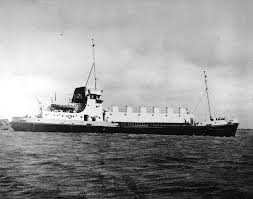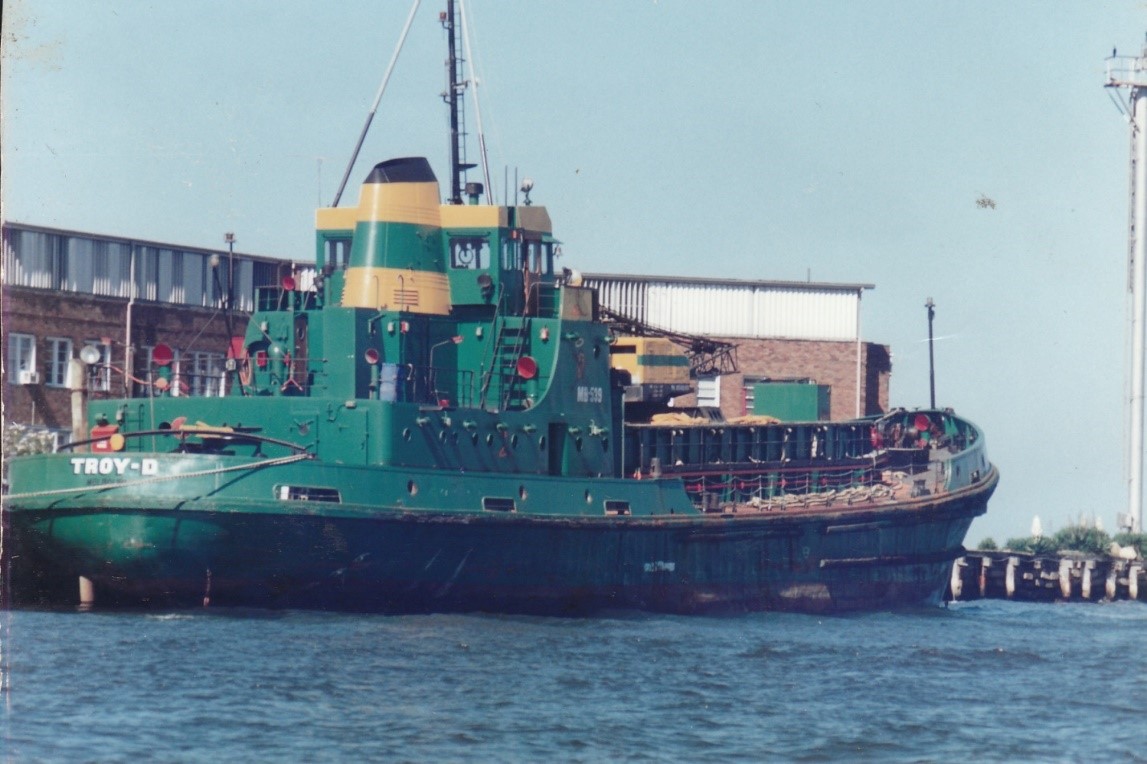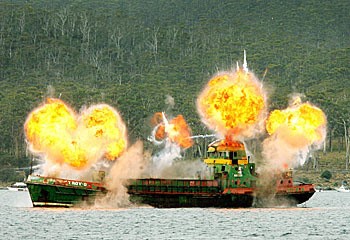A deliberately sunk old coaster wasn’t a great success as a tourist site, but the marine life loves it

Photo: Shuyue Zheng
What was the “Troy D”? She was an anonymous little 55.5 metre long 792 ton vessel. She was built in 1969 as the hopper Barge “ROY A. CAMERON”, constructed at the State Dockyard, Newcastle. The barge was built for the Melbourne Harbour Trust Commissioners for use in Port Phillip Bay. The launch was delayed by a strike of yard painters and dockers. No official launch took place and the barge quietly slipped into the harbour, watched by dockworkers. She shipped and dumped spoil dredged from the Yarra River and Port Phillip shipping channels. Her only brush with fame was being a support vessel when part of the Westgate Bridge collapsed, killing many workers. She was laid up after two decades of service

She was then purchased by Devine Shipping from the Melbourne Port Authority in 1995. She was going to work for Pioneer quarry company at Bass Pt on the South Coast of NSW, taking gravel to Sydney. Pioneer didn’t own the vessel but contracted for shipping, and as one contract that ended up in court shows, usually settling for unseaworthy old rust buckets.
Her new working life was cut short as she grounded at Bass Point on the 1st November 1995. The papers reported “The bulk carrier ‘Troy D’ was scheduled to pick up a load of blue metal from the Quarry at Bass Point. The ship approached the jetty from the port side facing the quarry, overshot the jetty and grounded on rocks to the west. The crew were able to winch the carrier off the rocks the next day, after a fishing trawler towed the anchor out to sea. Fortunately the sea was calm and the ship only suffered minor damage to the rudder. It had to be towed back to Sydney.” They must have found a few other problems as she was laid up while the owners searched the world for a suitable replacement. In 1998 the Troy D was finally replaced and left to rust.
After the forestry industry started to decline it looked for a while like the town of Triabunna in Tasmania might disappear completely. Its crumbling old woodchip mill had been bought up by environmental activists, and just to be sure it was never coming back as a forestry asset, they started on the mill equipment with a gas axe. There was probably no need to worry as no-one had been spending money at the mill for decades. The wharf was rusty and fragile and required millions of dollars for repair work. However, for the locals, it seemed like their livelihood had been sabotaged. The more enterprising among them trotted off to the government with a list of ideas for revitalising the town. One was a tourism industry based on diving. All they needed was a fat cheque and a big drawcard dive spot, so they settled on an artificial reef/ wreck dive.
This involved sourcing an interesting ship and then spending about a million dollars on an environmental clean. While other States were acquiring guided missile destroyers as dive sites, Triabunna businessmen went to the Tamar where an eccentric local slipway owner had for a long time been collecting rusting old coasting vessels for scrap. They sat half-sunk around his wharf, an eyesore and constant headache for the port authority. He offered up the “Cotswolds Prince”, an undistinguished coaster, for what he felt was a generous price.
The government wasn’t having any of it, as in any sober moment the idea was too expensive for the likely small public benefit. I have it on good authority that the proponents got an invite to a BBQ and asked the then Premier Jim Bacon to make a commitment while he was a bit ‘under the weather’. It worked. A $1 million cheque meant the “Cotswold Prince” was secured. Then the shipowner got a better offer and the “Cotswold Prince” went to a scrapyard instead.

Up in southern NSW the owners of the worn out “Troy D” were wondering what to do with the old rust bucket, scuttling worn out vessel had become very expensive as governments tightened up environmental requirements. The clamour for a Tasmanian dive wreck was heard in 2006, and for a relatively low price they offered to take the Troy D to Maria Island and sink her.
In 2007, Canadian ship sinker Roy Gabriel blew her up with much flourish and a bit too much explosive. For a while she was popular but when no economic miracle occurred the locals lost interest.

For divers the site was not without limitations, a bit far away, variable visibility and it wasn’t really a very distinguished ship. I’ve recently dived it and it is an interesting wreck, one of the few largely intact wrecks still left in Tasmania. She has the benefit of adjoining a beautiful park, often visited by dolphins and other marine life. On a calm day its still a worthwhile trip, but she was never going to be a great tourist attraction. For the marine life now overtaking her previously bare painted hull, it is a refuge with a beauty that eluded the Troy D during her working life.
